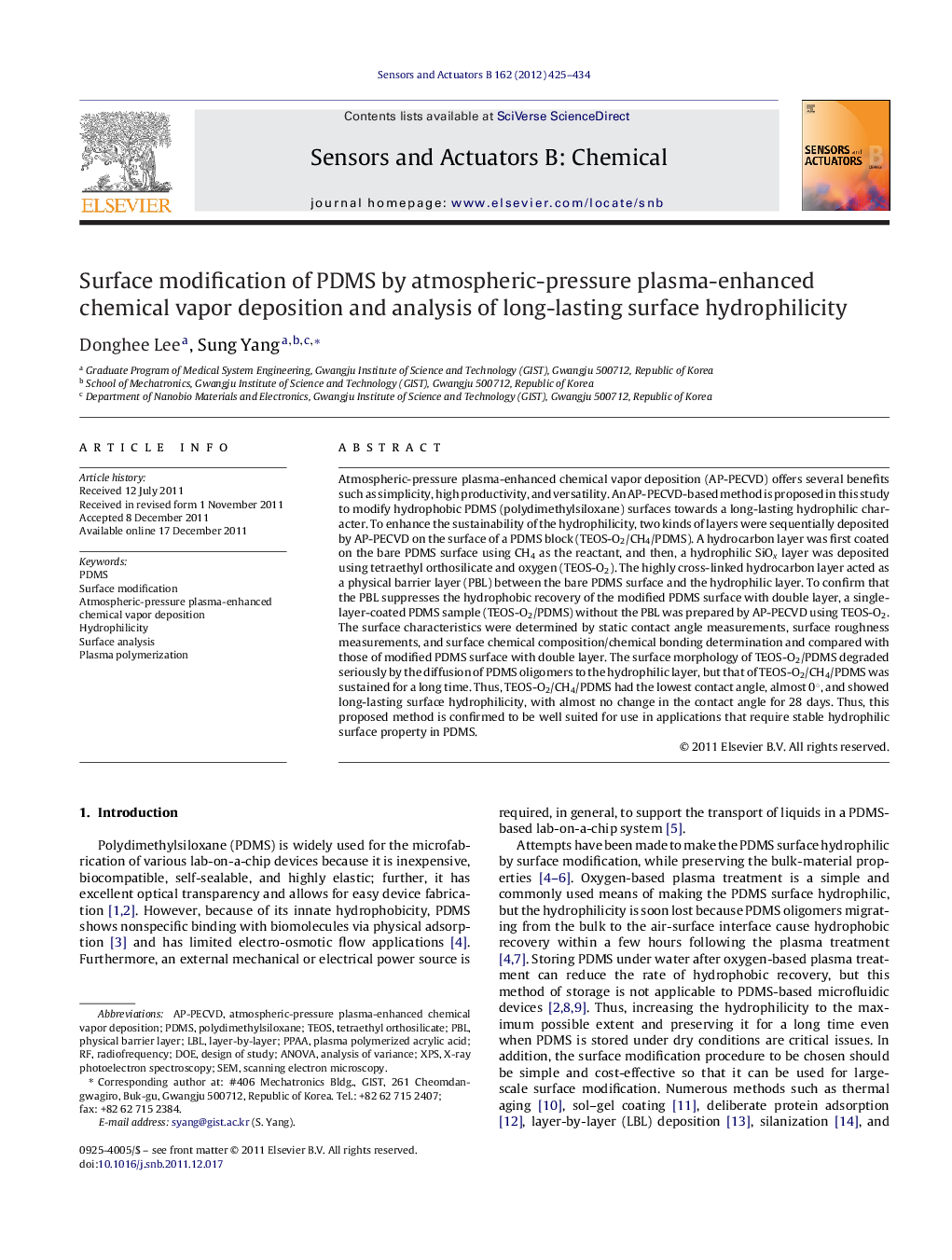| کد مقاله | کد نشریه | سال انتشار | مقاله انگلیسی | نسخه تمام متن |
|---|---|---|---|---|
| 740725 | 894181 | 2012 | 10 صفحه PDF | دانلود رایگان |

Atmospheric-pressure plasma-enhanced chemical vapor deposition (AP-PECVD) offers several benefits such as simplicity, high productivity, and versatility. An AP-PECVD-based method is proposed in this study to modify hydrophobic PDMS (polydimethylsiloxane) surfaces towards a long-lasting hydrophilic character. To enhance the sustainability of the hydrophilicity, two kinds of layers were sequentially deposited by AP-PECVD on the surface of a PDMS block (TEOS-O2/CH4/PDMS). A hydrocarbon layer was first coated on the bare PDMS surface using CH4 as the reactant, and then, a hydrophilic SiOx layer was deposited using tetraethyl orthosilicate and oxygen (TEOS-O2). The highly cross-linked hydrocarbon layer acted as a physical barrier layer (PBL) between the bare PDMS surface and the hydrophilic layer. To confirm that the PBL suppresses the hydrophobic recovery of the modified PDMS surface with double layer, a single-layer-coated PDMS sample (TEOS-O2/PDMS) without the PBL was prepared by AP-PECVD using TEOS-O2. The surface characteristics were determined by static contact angle measurements, surface roughness measurements, and surface chemical composition/chemical bonding determination and compared with those of modified PDMS surface with double layer. The surface morphology of TEOS-O2/PDMS degraded seriously by the diffusion of PDMS oligomers to the hydrophilic layer, but that of TEOS-O2/CH4/PDMS was sustained for a long time. Thus, TEOS-O2/CH4/PDMS had the lowest contact angle, almost 0°, and showed long-lasting surface hydrophilicity, with almost no change in the contact angle for 28 days. Thus, this proposed method is confirmed to be well suited for use in applications that require stable hydrophilic surface property in PDMS.
Journal: Sensors and Actuators B: Chemical - Volume 162, Issue 1, 20 February 2012, Pages 425–434